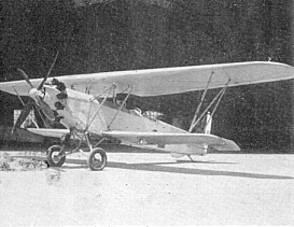User:Lebclout/sandbox
Hippodrome of Roman Berytus
The Hippodrome of Roman Berytus was a huge circus in the Roman colony of Berytus, actual Beirut.
History[edit]
In ancient Beirut there was a huge hippodrome near the port and the Roman Forum.
The Roman hippodrome of Berytus was the second to be discovered in Lebanon after the Tyre Hippodrome, making Lebanon home to two of the five known Roman hippodromes in the Levant[1]. The Roman Hippodrome of Beirut is considered to have been the grandest of the five, having amphitheaters that are several meters high and a race track, which is more than 90 meters long.[1]
During the 6th and the 7th centuries, the activities in hippodromes across the Byzantine empire were banned under the pressure of the Eastern Orthodox Church, so the structures fell in disrepair and later -under Arab rule- their stones were used for the construction of other buildings: the ancient hippodrome of Beirut thus laid forgotten until its unearthing in the XIX century.
The Roman Hippodrome, which occupies 3500 m² near the Maghen Abraham Synagogue in Wadi Abu Jamil, the historic, Jewish quarter of Beirut, was discovered in 1988.[2]
Preservation Difficulties[edit]
In 2009, Culture Minister Tamam Salam, had the site listed officially in the general inventory of historic buildings, ruling that it should be preserved in situ and turned into a tourist landmark.[1]
According to an article appearing in the French daily, L’Orient le Jour, Gaby Layoun, the Culture Minister at the time, approved in March 2012 plans for a luxury residential complex to be built over the ruins of Beirut’s Roman Hippodrome, bypassing the recommendations of three of his predecessors: Tarek Mitri, Salim Wardé, and Tammam Salam.[3] [4] The Association for the Protection of the Lebanese Heritage (APLH) organized protests as an attempt to reverse the Culture Ministry's decision to allow the building over the hippodrome.[5] Following the litigation brought by the Association for the Protection of Lebanese Heritage (APLH), the court suspended on May 31, 2012 the Culture Ministry's decision, N˚ 849, to dismantle the Roman Hippodrome that would have allowed for the construction of a building project on the site.[6] The site was protected until 2015 when construction began again.
Notes[edit]
- ^ a b c http://english.al-akhbar.com/content/minister-culture-dismantles-beiruts-roman-hippodrome
- ^ http://stateofmind13.com/2012/03/18/save-beiruts-heritage-the-roman-hippodrome-to-be-demolished/
- ^ http://www.lorientlejour.com/category/%C3%80+La+Une/article/750188/L'hippodrome_romain_de_Beyrouth_englouti_par_les_promoteurs.html
- ^ The three previous Culture Ministers, Mitri, Wardé, and Salam criticized Layoun's move and reiterated the importance of protecting and preserving the archeological site (http://www.nowlebanon.com/NewsArchiveDetails.aspx?ID=395164) A march to protest the destruction of the hippodrome took place on March 24, 2012 (https://www.facebook.com/events/395461473816530/)
- ^ http://english.al-akhbar.com/content/protest-called-protect-lebanese-ancient-ruins
- ^ http://libnanews.com/2012/05/31/hippodrome-romain-de-beyrouth-la-justice-suspend-la-decision-de-demantelement/
See also[edit]
Bibliography[edit]
- Humphrey, JH. Roman Circuses: Arenas for Chariot Racing. University of California. Los Angeles, 1986 ISBN 9780520049215
==[edit]
PETRELLA AIRPORT - Aeroporto Petrella di Mogadiscio
[File:Mogadishu International Airport.jpg|thumb|right|Original building of Petrella airport, restructured and still in use]]
The Petrella Airport (officially called "Aeroporto Petrella di Mogadiscio") was the first international airport in Italian Somalia. It was opened in 1928 with the name "Enrico Petrella" in honor of an Italian pilot who died in the same airport of Mogadiscio italiana. In 1941 was fully destroyed during WW2 and remained inactive for some years as a civilian airport: only military airplanes used it. In 1950 was reopened asa civilian airport by the Italian authorities of the ONU Fiduciary Mandate. Actually it has been greatly improved and it is called the Mogadishu international airport.
History[edit]
The initial Mogadishu airport was established in 1928 with the name "Aeroporto Petrella di Mogadiscio", the first such facility to be opened in the Horn of Africa.

It was located nearly 5 km south of Mogadiscio's port: since 1938 a bus service (one of the first in Africa) was connecting the airport with the colonial Italian city and its port.
It served as the main military airport serving Italian Somaliland. The "36 Squadriglia Mogadiscio" was based there since 1926 http://www.aeronautica.difesa.it/storiaT... Historical documents: section Somalia; page 11] The airport was the center for Italian air-raids & bombings on southern Ethiopia during the Italian conquest of Abyssinia in 1935-1936.
In 1930 the airport was known worldwide because the pilot Francis Lombardi flew from Rome to Mogadiscio in the same flight, obtaining an aviation record http://senato.archivioluce.it/senato-luc... Video showing the Petrella airport and the Lombardi airplane]
In the mid-1930s, the airport began offering civilian and commercial flights. http://dspace-roma3.caspur.it/bitstream/... Photo of Petrella-Mogadiscio airport] A regular Asmara-Assab-Mogadishu commercial route was started in 1935, with an Ala Littoria Caproni 133 providing 13-hour flights from the Mogadishu airport to Italian Eritrea. The aircraft had a maximal capacity of 18 passengers, which at the time was a record. In 1936, Ala Littoria launched an intercontinental connection between Mogadishu-Asmara-Khartoum-Tripoli and Rome. The voyage lasted four days and was one of the first long range flights in the world.Flavio Riccitelli (A.I.D.A.). "ALA LITTORIA S.A. (1934–1941)". Il Postalista. Retrieved 7 October 2013.
In 1934 the Italian aviation in Somalia -under the orders of captain Pocci- was made of the "Squadriglia di Mogadiscio" with 9 Romeo Ro-1, the group that attacked Ual-Ual (starting the 1935 italo-ethiopian war)...Paolo Ferrari, p 308
In 1939 the Petrella airport was started to be enlarged, but the beginning of WWII blocked the works. During the East African Campaign the airport was greatly damaged.
Notes[edit]
Bibliography[edit]
- Ferrari, Paolo. L'aeronautica italiana: una storia del Novecento. Editore FrancoAngeli, 2004 ISBN 8846451090 ( https://books.google.it/books?id=zwdQOqm... ])
- Mannone Guido, Le Ali del Littorio - Piccola Storia dell'Aviazione Civile Italiana, Grafica Bierre, 2004.
See also[edit]
- Italian Somalia]]
- Mogadishu under Italian rule]]
- Mogadishu Airport]]
- Ala Littoria]]
Somalia italiana (colonia)}}

